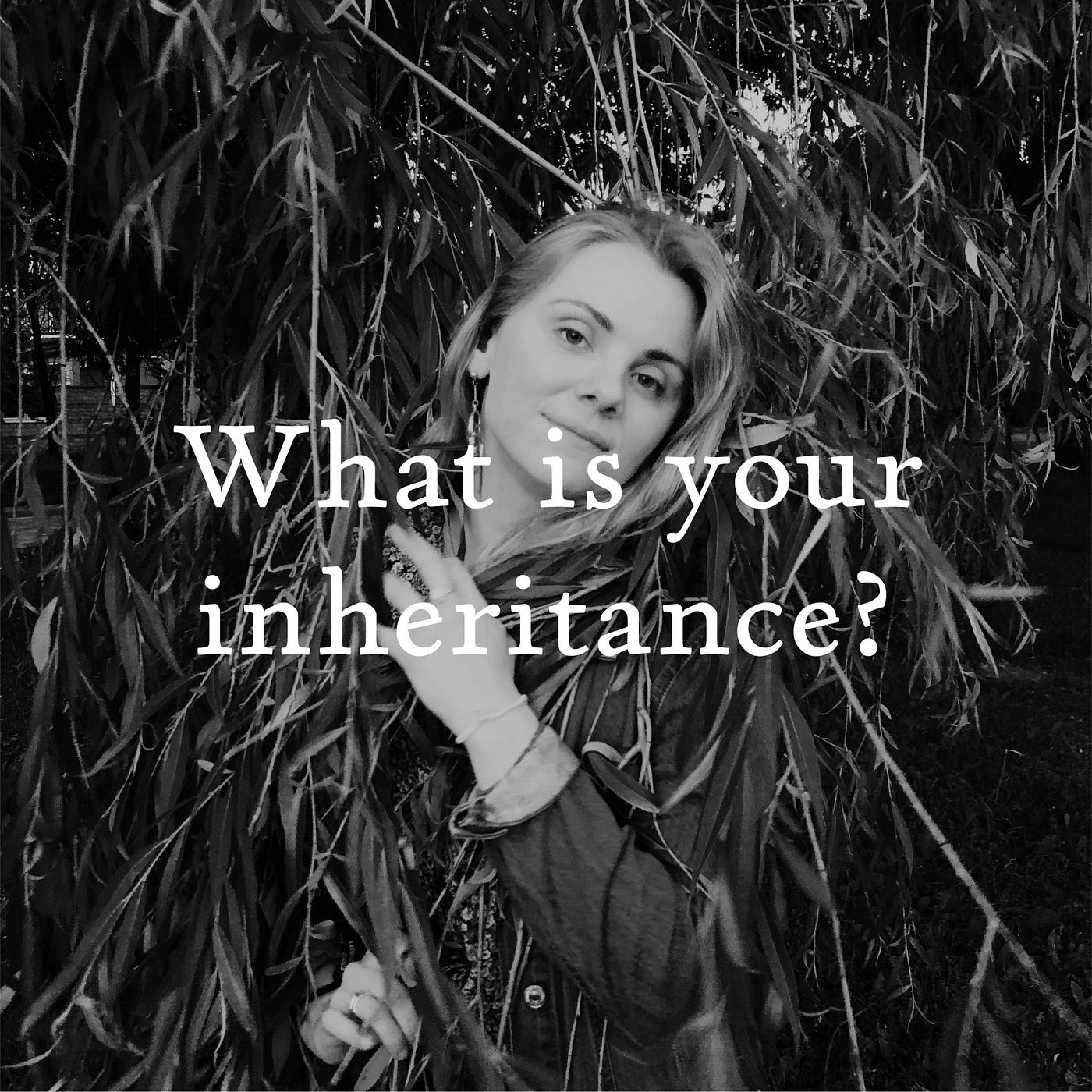
In May, audiences in New York City will be able to visit the immersive installation Inheritance at Wildrence: a site-specific “museum of memories” within the venue, where they will interact with live performers and objects as well as an augmented reality-enhanced soundscape, in order to explore the creator’s personal history. The hope is that participants of Inheritance will also start to examine their own personal histories after going through the experience. The work is also being created by Katya Stepanov as part of a larger project about identity called The Inheritance Project.
We spoke with creator Katya Stepanov and director Christy Casey over email to learn more about the project.
No Proscenium (NP): Can you tell us a little about yourselves and your backgrounds?
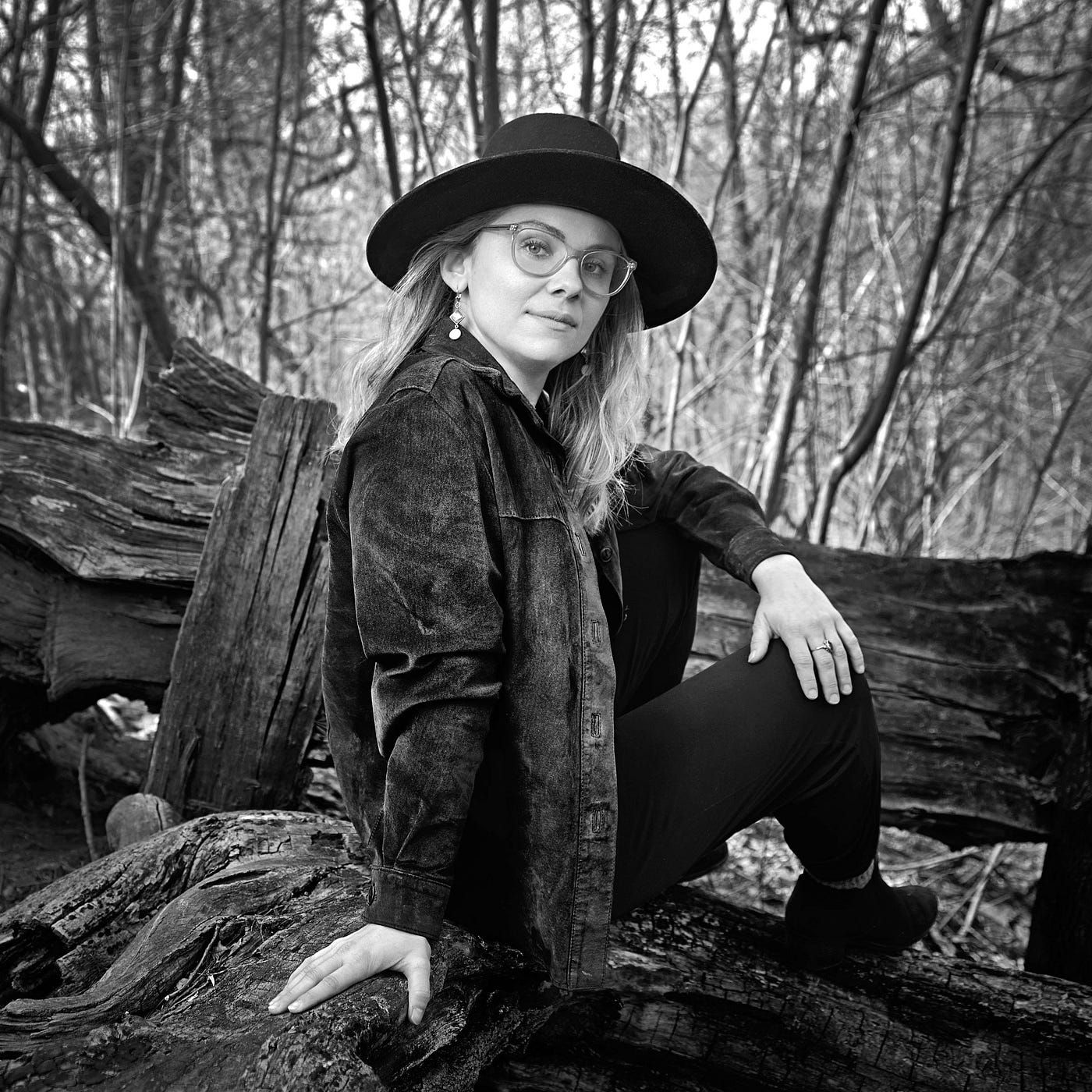
Katya Stepanov (KS): I am a multidisciplinary artist — someone you might call a “hyphenate.” I was born into a newly independent Belarus four days after the collapse of the USSR and immigrated to Teaneck, New Jersey when I was a year old. Despite growing up in America, my Russian upbringing is a significant part of who I am and shapes my work as an artist.
During my final year in Carnegie Mellon’s School of Drama, I studied abroad at the Moscow Art Theater. Expressing myself in my native tongue as an adult gave me a new sense of belonging I’d never experienced before, however I was also able to recognize the aspects of my personality and behavior that were distinctly “American.” The theatre I was exposed to in Moscow made me realize that I wanted to do more than perform. I wanted to write, to direct, to design in different mediums and to tell stories still untold, including stories that accurately depict Russian culture and the real bi-cultural experience. At the time, Sleep No More had just opened and the idea of immersive theatre was relatively unknown, but I knew I wanted to create experiences where the traditional boundaries between performers and audience, stage and reality could dissolve.
With classmates at Carnegie Mellon, I created my first immersive company, In the Basement Theater Co in 2011. Upon graduation, we were awarded the Arts @ Renaissance Artist Residency, where we created our first immersive experience, The Lady in Red Converses with Diablo. Since then, I have performed in regional theatres across the country, including the Cincinnati Playhouse, Barrington Stage, and the Contemporary American Theater Festival. I have also worked as a designer, director and producer. Last year my longtime collaborator Jesse Carrey and I co-founded Rebis, an immersive storytelling studio focused on creating audience-driven interactive narratives.
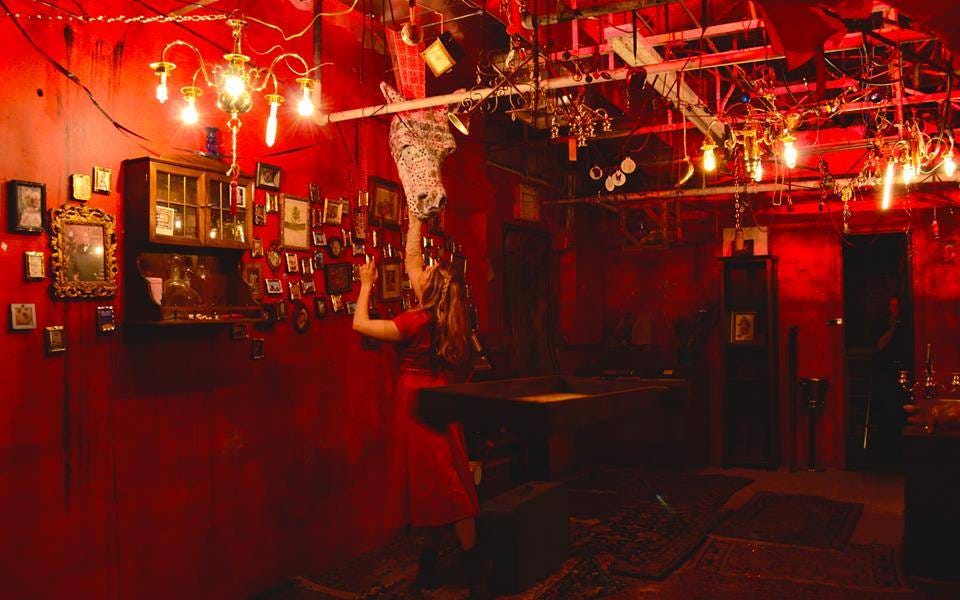
My current focus is The Inheritance Project, a storytelling platform for people to explore their inheritance, share stories and hear the stories of others. We define inheritance as ancestry, culture, beliefs, social conditions, traits and perspectives received from past generations. I believe that by confronting the stories we inherited and the ones we tell ourselves, we can become the authors of our own story and deepen our understanding of one another and ourselves. As the company’s founder, I believe that if we are inviting people to share the stories of their inheritance, I must begin by telling my own.
Inheritance is the story of my inheritance as a Russian-Jewish immigrant, which audiences can explore and engage with through immersive theatre. We hope that future stories told on the platform will also become adapted into unique works of their own.
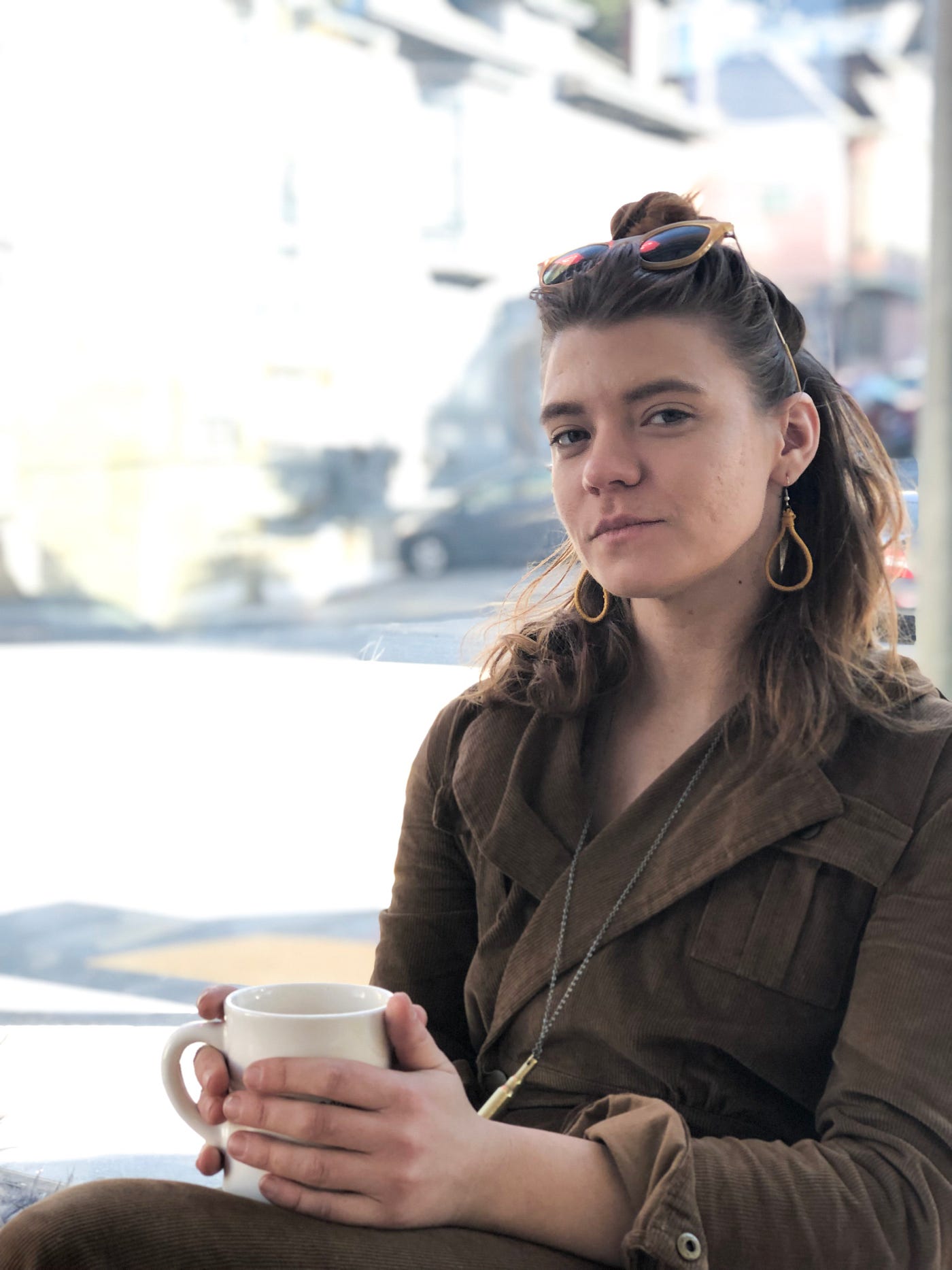
Christy Casey (CC): I started working in immersive experiences during college. For me, the most exciting moments of immersive experiences were when I got to engage with actors and feel like I was entering another world. I knew that I wanted to create work that gave audiences the chance to explore fictional realms. I was incredibly lucky to have the opportunity to spend a year working with the Interactive Deep Dive, a think tank lead by Jeff Wirth dedicated to creating experiences where participants play the protagonist in the narrative, and to train in the performance techniques that make those experiences possible. I’m excited to incorporate those techniques to engage the audience for Inheritance.
NP: What, in a nutshell, is Inheritance about?
Katya: Inheritance is an investigative journey into identity. A museum of memories greets visitors as they move from room to room, exploring Katya’s Russian-Jewish inheritance, and learning to examine their own.
Are we who we claim, or are our identities defined by our inheritance — our cultural upbringing and social conditions outside of our control? Guests’ perspectives evolve as they become characters in my life and bear witness to my experience as a Russian-Jewish immigrant growing up in America and trying to find belonging amidst contradicting cultural ideas of self-identity, happiness and success.
The show contains two parts: a performance where guests get to step into my Russian-Jewish upbringing and an interactive exhibit. The exhibit will invite guests to explore inheritance in an interactive, hidden soundscape revealed in fragments of personal and cultural history — tales, relics, songs and poems embedded in the space. In the absence of a narrator, guests must reach their own conclusions: What does it mean to inherit an identity and can we be the authors of our own story?
NP: Why did you create this experience? What inspired you?
Katya: A life-long process of self-inquiry made me realize how powerful the exploration of inherited identity could be for others. I realized that if I was about to ask millions of strangers to share their stories of inheritance with me through The Inheritance Project, sharing my story first could help illuminate the challenge of deep self-reflection and inspire others to do the same. I believe that my story is woven into the fabric of other’s stories, and that they are woven into the threads of my own. I am inspired by the power of vulnerability. I believe this experience will encourage others to open up — sharing their stories and embracing perspectives that may differ from their own.
My identity is complicated. I don’t have memories of living outside of the States, but the fact that I am Russian and an immigrant is an essential part of my identity. I was raised by Soviet-Russian parents and didn’t learn English until I went to elementary school. I don’t feel “American,” whatever that means, but trying to explain my identity to people has been a struggle my entire life. I always joke that I am a “Russian in America, and an American in Russia.” When I make this joke, I realize time and time again that the struggle to communicate this complicated thing we call “identity” resonated with a lot of people. So now I’m sharing my journey and inviting others to embark on their own.
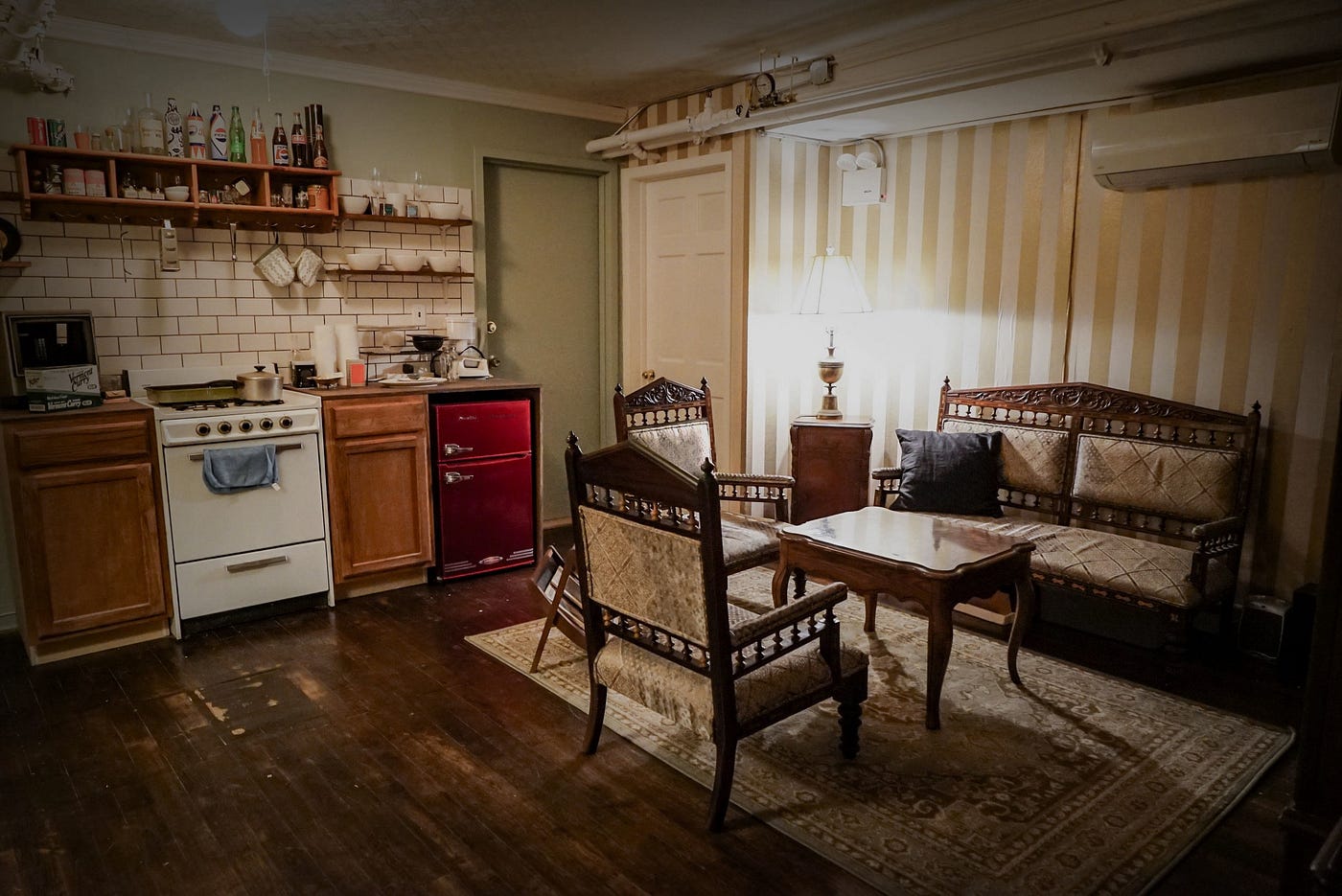
NP: How is the venue incorporated into the Inheritance experience?
KS: When I first walked into Wildrence, I felt like I was walking into a set from my imagination. I am grateful that I am able to create this experience somewhere that feels like a true home for this story. I have told them in person, but it feels like their design came out of a dream. Jae Lee and Yvonne Chang (the co-founders of Wildrence) agreed, and decided to join our team as Creative Directors for both Inheritance and The Inheritance Project as a whole.
Get Kathryn Yu’s stories in your inbox
Join Medium for free to get updates from this writer.
SubscribeSubscribe
It is a gift to design this show with the designers of Wildrence. Yvonne and Jae are able to take each moment of the show and give it the best home. Each room has become a different world in our story. As we jump from the idea of tangible inheritance to intellectual inheritance to emotional inheritance, we move from a Soviet waiting room to my grandmother’s apartment to a library of Jewish history and eventually arrive in America — an all white room symbolizing the formation of identity in a land of freedom and erasure.
The venue will come to life in the second act when guests are given new audio technology — Bose “sound glasses” which use a built-in gyroscope to track the audience to deliver an individual soundscape as they explore. If they pick up certain objects or sit in certain seats, a previously invisible world of sound will emerge around them, supported by the interactivity of the original design.
CC: It’s hard to believe Jae and Yvonne didn’t design Wildrence specifically for this production. For those who aren’t familiar with Wildrence, it’s a space on Canal street designed to host immersive experiences. The space includes a foyer and kitchen remarkably reminiscent of a Soviet apartment. There’s also a library and an open white room that create the perfect environment for the audience’s intellectual and emotional exploration of inheritance and to accommodate the more poetic, abstract aspects of the performance.
During the first half of the experience, the audience members are greeted as guests in babushka’s home. They will witness site-specific performances from the cast and be invited to engage with the performers in certain moments. The second half of the show is a living museum, where guests can interact with the physical space and make their own decisions about how they want to explore it.
NP: How is the audience incorporated into the work? What kinds of choices can the participants make during the experience?
KS: I’ll let Christy speak more on this as the director of the piece, but as the creator, I believe stories have the most impact when they are felt in the first-person. To facilitate that, the audience is incorporated into the action of the memories around them without having to perform themselves. Scenes emerge fluidly around them and they are guided by actors through the first act as witnesses to my story of inheritance. In the second act, guests have more agency to explore the experience on their own. In smaller groups, they will have the chance to explore each room and unearth soundscapes, stories and objects with hidden meaning. They will be able to choose what they are most drawn to exploring on their own.
CC: The audience’s involvement is more an exploration than a binary choice. The first engagement occurs before they arrive when they are asked to answer, “What does inheritance mean to you?” At the end of the experience, they’ll be asked the same question and invited to share it with future audience members on our Inheritance Wall. Throughout the performance, guests are treated as family friends in the space and will have several opportunities to engage with the performers, but the level of engagement will differ for each person based on their willingness to participate.
Guests may become part of a Shabbat ceremony or help trace the lines of Jewish inheritance through history. Those who would rather observe, have that option as well. During the second half of the show, the audience will be split into smaller groups and have more agency over how they explore each room. In each room, there will be several different engagements for audiences to discover. Specifically, we are working with Bose AR technology to create spatially-triggered audio-driven experiences that will weave the live experience with a pre-recorded soundscape.
NP: How are you designing around audience agency, consent, and safety?
CC: Audiences will not be asked to participate in actions that involve sexuality, violence, or situations typically associated with consent and safety in immersive theatre, but we will ask audience members to engage in a process of self-exploration that is vulnerable, and that can bring up feelings of discomfort, which is an essential component of growth. Sharing personal stories is an invitation, never an obligation.
We provide the tools to explore, but. it’s up to each person how deeply they want to dig. Self-reflection, however, is an ongoing process. We believe most of that digging will happen in the days, weeks and months after the show.
Having said that, there are physical and emotional situations every audience member must be comfortable with. Audience members should be comfortable going up and down stairs, being in crowded rooms, receiving hugs given with familial energy and hearing stories that deal with sexual assault, domestic violence and addiction. We have a limited number of tickets for every performance reserved for individuals who are physically unable to stand for the duration of the performance to make the show as accessible as possible.
NP: Who is the ideal audience member for Inheritance?
KS: The ideal audience member for Inheritance is anyone who seeks to grapple with their inherited identity, immigration experience, how trauma is transferred epigenetically from parents to children or who is curious about their own inheritance. While the show will have particular resonance for anyone who is bi-culturally Russian-Jewish and American, it also invites a conversation about our cultural ideals and what it means to be “American” and “White.” If you’ve lived in America for several generations, you may not think much about your ancestors or feel that you have a clearly defined culture.
Whiteness is too often assumed to be the “default” in America. Some assume it doesn’t have ancestry attached to it, but it does.
I believe anyone who is willing to think outside the box and confront their relationship with their inheritance and self-identity would have a rewarding experience.
CC: Inheritance is a story about Russian-Jewish heritage and grappling with an immigrant identity that’s difficult to categorize, so it will resonate with people who can relate to that experience. But at its heart, Inheritance is a story about reconciling the parts of our identity that we’re handed down — or that were imposed upon us — with the parts of our identity that we choose for ourselves. The two are so intertwined that they can be difficult to parse. We all have pieces of our inherited identity that we love and things that we wish weren’t there. Whether your view of your inheritance is positive or negative, understanding the behaviors and beliefs that shaped us before we were able to discern them for ourselves — perhaps even passed down genetically, as with the inheritance of trauma — empowers us to more fully embrace who we are and who we want to be.
There’s no specific person the show is catered towards, but I can tell you who it’s not for: It’s not for people who are looking for an escape or light-hearted entertainment. It is for people who are willing to be challenged, to explore their identity and to take a deeper look at the person they see in the mirror.
NP: What do you hope participants take away from the experience?
KS: I hope participants will walk away from this experience with a deeper understanding of how inheritance informs our behavior and perception of our identity. I hope they will leave with a better understanding of what a bi-cultural existence looks and feels like outside of the reductive depictions of immigrants in American media and television.
In today’s social climate, there is a tremendous emphasis on identity and the choices you make to culturally identify. If your family is native to the land you were born, you may not have to consciously ask yourself what you identify with, but how many of us can say this is true of our families? The percentage of people born in the country of their actual inheritance is growing smaller and smaller, and with mass immigration and refugee movements across the world, the question of identity is becoming increasingly important.
Ultimately the question comes down to what stories we believe about our family and ourselves? I believe if we’re able to examine the story of our identity and the story of our inheritance, we will be able to consciously choose how our identities. I hope participants will leave with a greater sense of connection to their inheritance story, and that they will be inspired to contribute their story to The Inheritance Project platform. The more we share stories with one another, the more opportunities we have to find connections where there were once divisions.
CC: I think any good piece of art leaves you with meaningful questions to grapple with. That’s my hope for this piece. Not confusion or cliffhangers, but questions that beget more questions because the ideas you’re examining are so nuanced that they don’t have a clear or immediate answer. It’s each individual’s journey to wrestle with the impossibly complex layers that shape who they are and how they see the world.
If there is one thing I want the audience to take away from this piece, and really any piece I work on, it’s that your perspective is not the only perspective: your truth, your beliefs, your expectations, are not shared by everyone. On the other hand, there is something that ties us together by virtue of our humanity. Hopefully, this glimpse into Katya’s story, the stories of the other performers and the stories shared through the Inheritance Project platform will help us recognize the assumptions we’re making about ourselves and those around us and foster more humane, human connections with each other.
Inheritance runs May 24 — June 2 at Wildrence. Tickets are $55. Learn more about the Inheritance Project.
NoPro is a labor of love made possible by our generous Patreon backers. Join them today!
In addition to the No Proscenium web site, our podcast, and our newsletters, you can find NoPro on Twitter, Facebook, YouTube, Instagram, in the Facebook community Everything Immersive, and on our Slack forum.
Office facilities provided by Thymele Arts, in Los Angeles, CA.



















Discussion